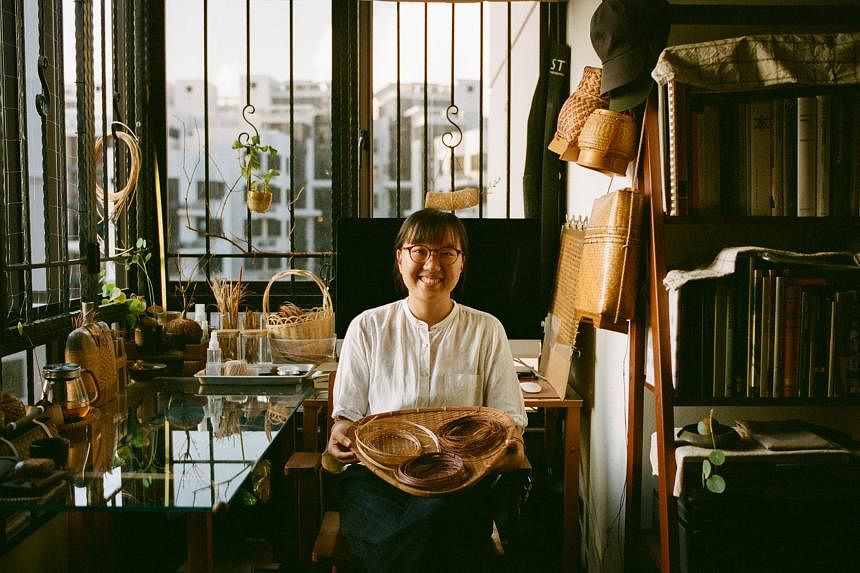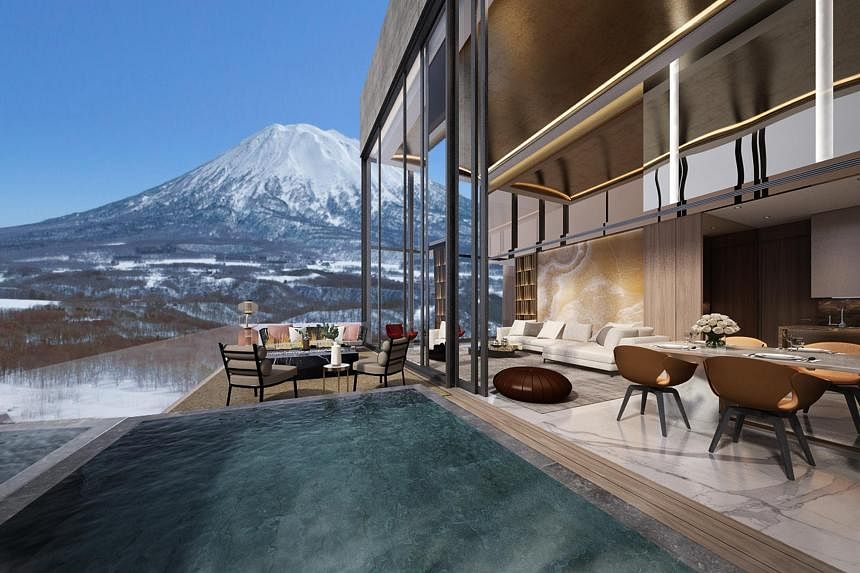SINGAPORE – The Straits Times talks to seven designers and architects on their dream projects for 2024, what inspires them, and how the projects are helping them hone their craft and design sensibilities.
These upcoming works include a collapsible rattan coffee table, paintings and ceramics, architecture and design books, as well as sustainable builds in Singapore and around the world.
Architect aims to think like a painter
Mr Rene Tan, 59, is the director of RT+Q Architects, which he co-founded in 2003. He was named Designer of the Year at the President’s Design Awards 2016.
The firm, too, has won accolades, including the Singapore Institute of Architects’ Architectural Design Awards and Urban Redevelopment Authority Architectural Heritage Awards, for projects such as the Petit Jervois apartments and a semi-detached house dubbed the House of Spice.
“I hope my inspiration for 2024 will be a non-architecture one. In fact, I want architecture to be the last thing on my mind, in terms of motivation. I think it’s essential that I exorcise all architectural things from my being in order to clear the way for new ideas.
In short, don’t think like an architect. Perhaps think and feel like a painter. I think painting will liberate me from my prejudices about design and free me from my hang-ups about architecture. These days, I produce a painting for every project my firm does.
Painting is an important activity. It makes me think about composition and form rather than plans and buildings.
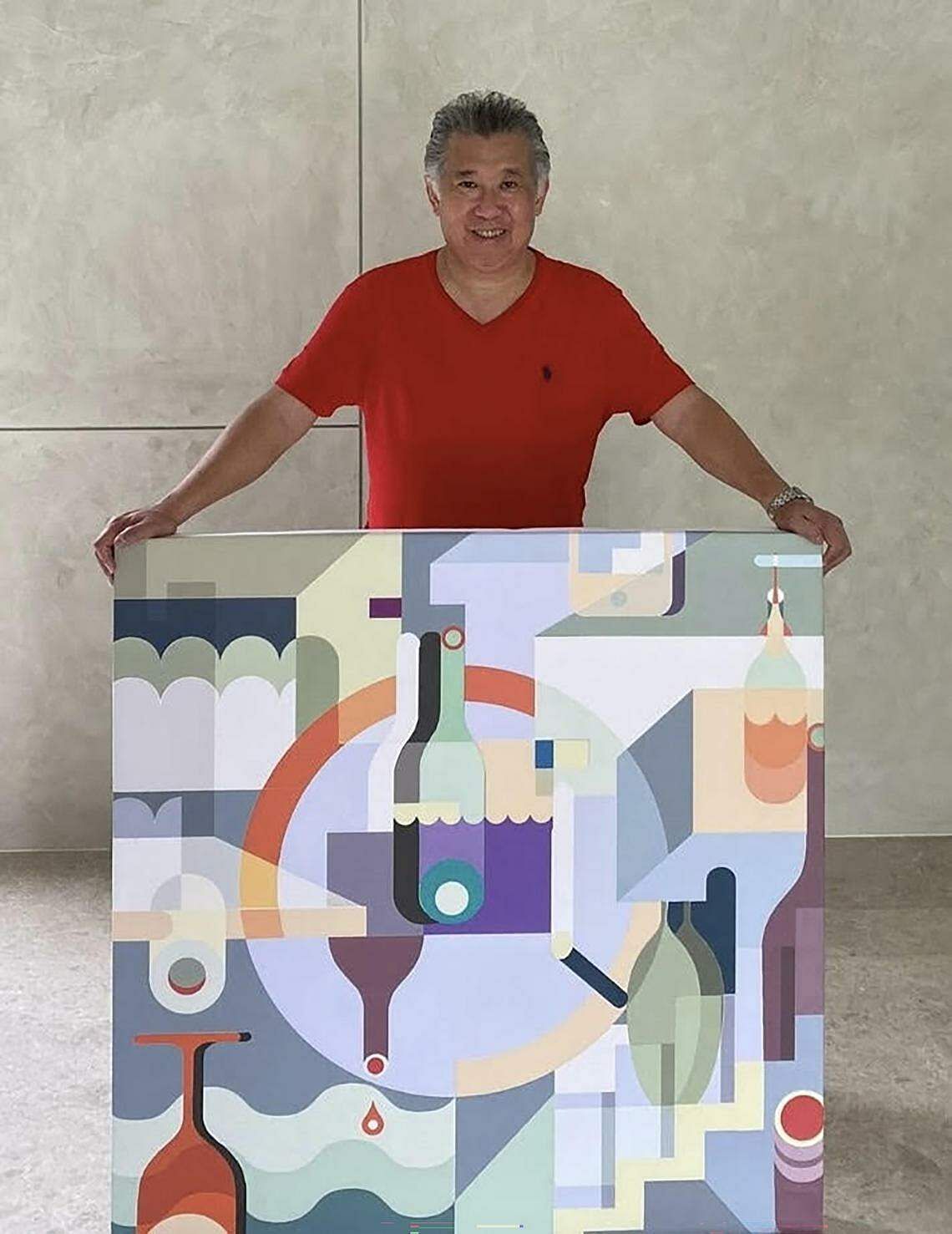
I also want to listen to more jazz. I believe the ad libitum aspect of jazz, which allows the artist to improvise, will steer me away from the tyrannical rules and dogmas of design.
In terms of buildings, we have projects whose completion we are looking forward to in 2024. These represent a new kind of thinking towards sustainable design. They are different from our previous works in the way they rethink materials, reconsider the weather and reimagine form.
We just published our book, Rethinking The Tropical House – 20 Years Of RT+Q Architects, which features 29 of our projects.
There is also the ongoing LC150+ project by RT+Q Architects. This is a travelling exhibition of physical models of the 20th-century master architect Le Corbusier’s work.
The models are products of RT+Q interns, who spend their first week building a model of one of Le Corbusier’s architectural works. Over the past 20 years, we have amassed some 220 models that are now touring the world.
These models are at Yale University in the United States, which I graduated from in 1987 with a double major in music and architecture. We share these models free of charge with the world.
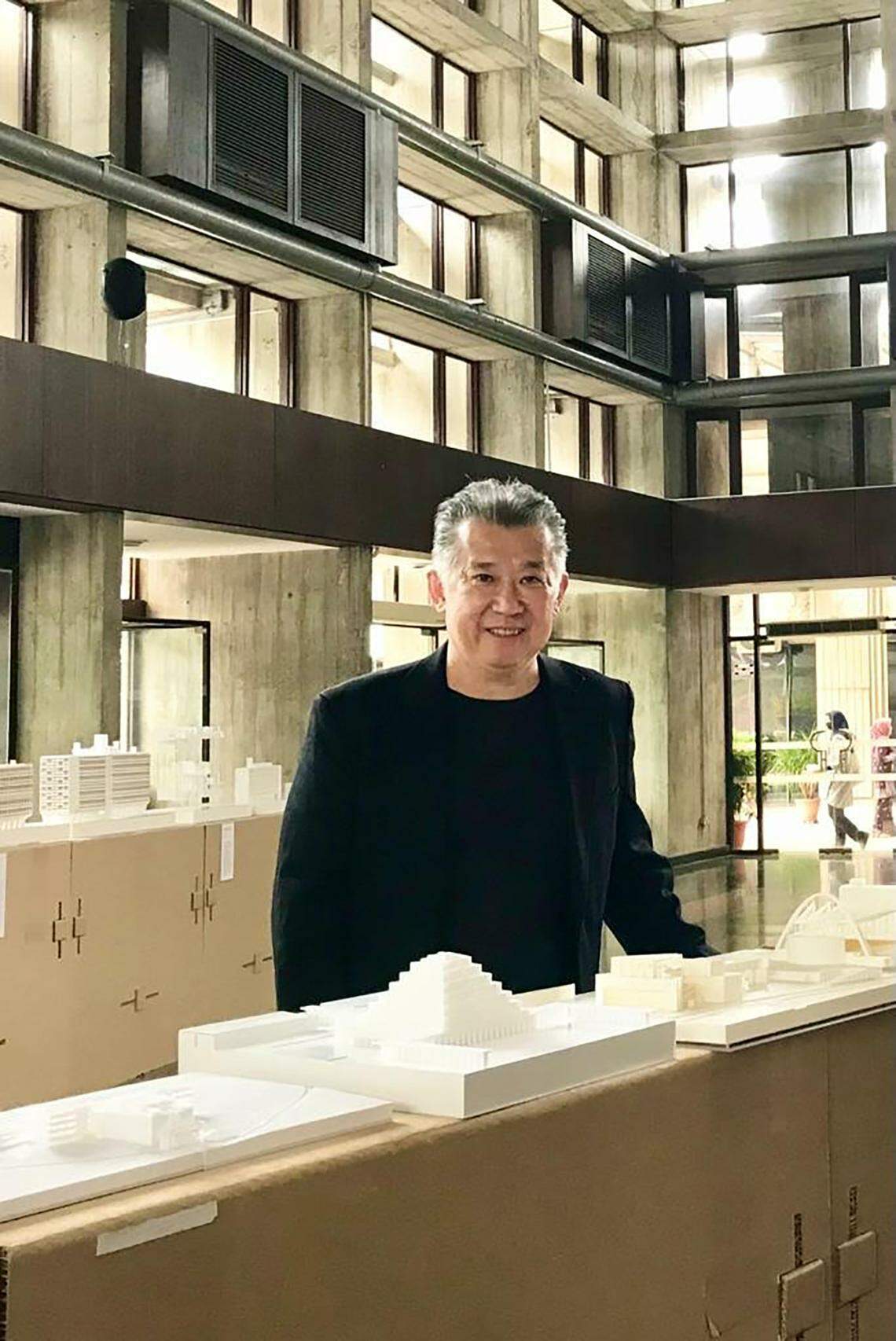
We also send our colleagues as ambassadors globally to meet people and give talks. The tour has already been to 23 venues around the world.
I see this project as the logical conclusion to, and physical manifestation of, lessons I learnt in architecture – especially in negotiating our increasingly digital world.
Another challenge in the future is to develop better working synergies between consultants and builders, and to understand each other’s trade better. This will produce better buildings and foster a more desirable environment.
In 2024, I will be buying less and designing more; shopping less and creating more.” – Arthur Sim
Serving the community

Mr Lim Cheng Kooi, 60, is the principal director of award-winning architecture firm AR43, which was founded in 2006.
Its accolades include the DFA Design for Asia Awards and International Architecture Awards for projects such as the Golden Pagoda Buddhist Temple and a building dubbed the Perforated House.
“My motivation this year is to focus on doing things that matter most and are close to my heart – perhaps working at a more comfortable pace, travelling more and spending more time doing paintings and ceramics, which I have been passionate about for over 35 years.
I hope to work on projects that will benefit and make a difference to people or the community as a whole.
The firm has been involved in pro-bono work in Bylakuppe, India, designing facilities for the aged and those with disabilities for welfare organisation Karuna Home. AR43’s first project for the organisation, a home for children with disabilities, was opened by the Dalai Lama in 2000.
A 28-room home for the elderly was completed just before the end of 2023 and I was unfortunately unable to attend the opening ceremony. It will be satisfying to visit it in 2024.
Our dream would be to work on a similar project in Singapore.
We have been working on several projects since before the pandemic, including the upgrading of two mosques, which were delayed for a few years.
These two mosques are fully funded by devotees. Unfortunately, the delay caused the budget to tailspin due to high inflation. Our motivation is to create a design that is sympathetic to their needs while being mindful of the budget.
This year, I also hope to work on my paintings and ceramics. Hopefully, I will have enough good pieces before the end of 2024 to have an exhibition.
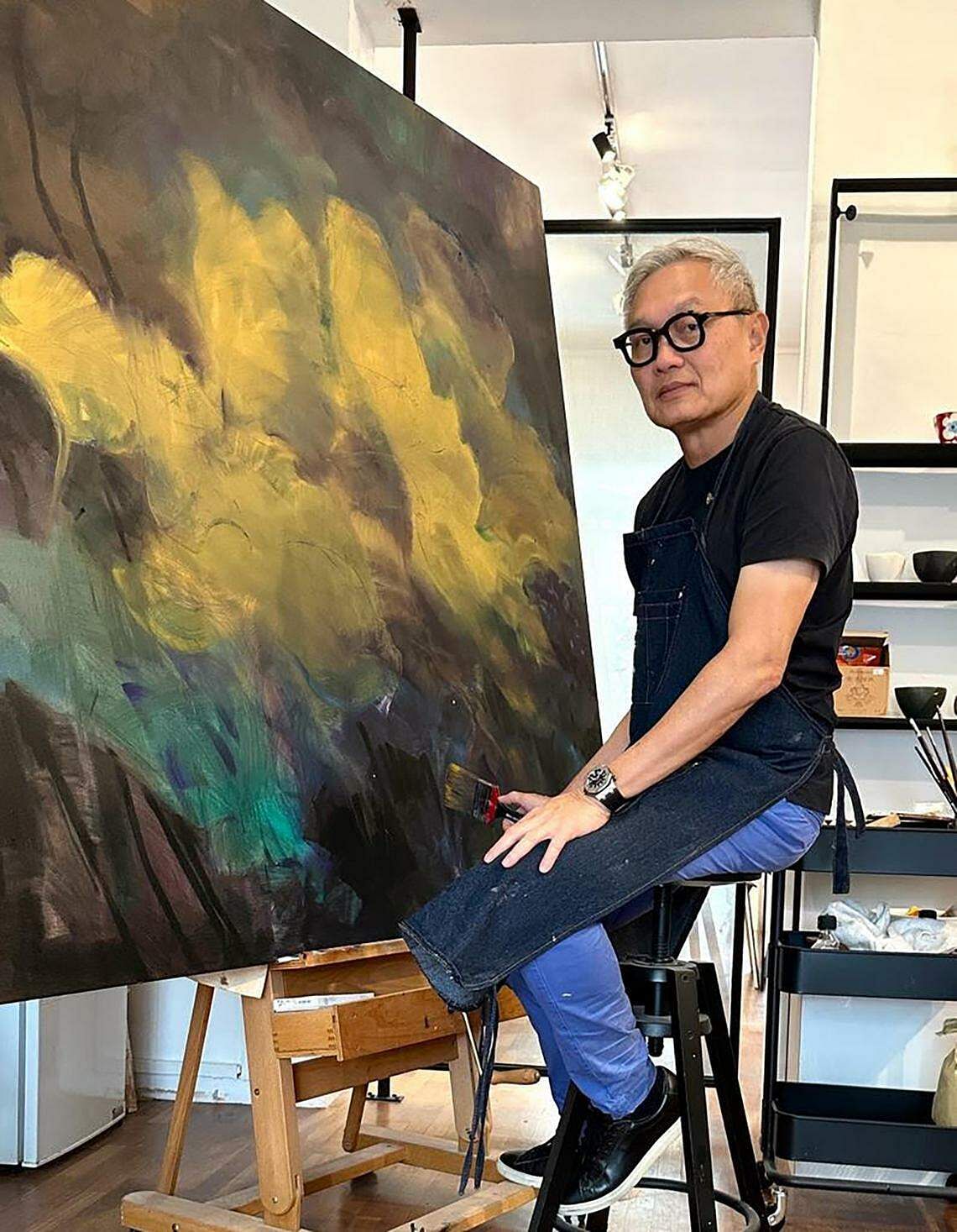
My last solo exhibition was in 2008, with all sales proceeds donated to Karuna Home and a bursary programme for Northbrooks Secondary School. The challenge for 2024 is about juggling my time between architecture and art.
Our profession has many challenges ahead. Inflation is making the practice harder in terms of managing higher business costs, and the interest of young architects is dwindling. We need to put an end to some outstanding problems such as the issue of undercutting architects’ fees by some players.
I hope for fairer remuneration, equal opportunities for smaller practices like ours, and to streamline business costs for the architectural profession to stay healthy.” – Arthur Sim
From Japanese ikebana to Chinese construction

Mr Kelvin Bing, who is in his 50s, is the founder of design and project management firm Renaissance Planners & Designers, which was established in 1994.
The firm has designed and completed 60 landed homes and over 300 interior design projects. Its accolades include the Singapore Design Award for private homes in Sunset Way and Namly Avenue.
“This year will be my 30th in the design industry and I want to give back to it, especially to those just starting out, by sharing the knowledge and experience I have gained along the way.
I recently published a book, Choreographing Spaces, featuring the firm’s works. I am working on another book that I hope will serve as a guide and reference for those in the design and building construction industries, using case studies from my firm to describe real-life processes better, as well as practical aspects of design – for instance, project management and the properties of construction materials.
I hope the new book will inspire young designers and architects to persevere in their chosen career. If design is going to be a lifelong endeavour, it is important to find satisfaction and inspiration from the profession.
When I was starting out in the 1990s, I was inspired by Singapore’s pioneer architects – such as the late William Lim, Alfred Wong and Tang Guan Bee – to push the boundaries of design. Their notable works, like Golden Mile Complex, the National Theatre and Marine Parade Community Club, are still inspiring.
I have also practised ikebana, the Japanese art of floral arrangement, since the 1990s. It has taught me how to be calm and still. More recently, I have been inspired by traditional Asian architecture, and intend to explore a more pluralistic approach to design that integrates different cultures.
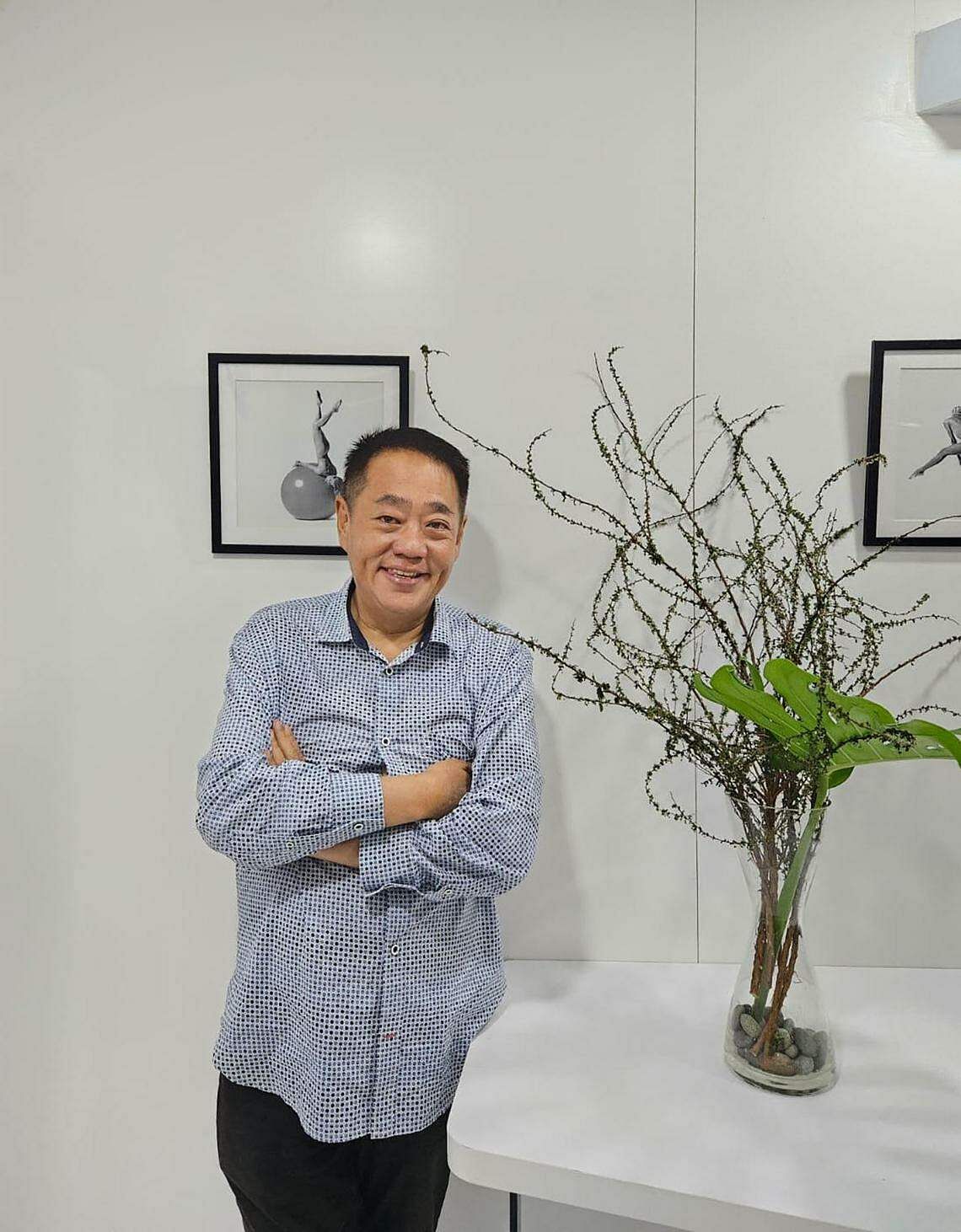
In 2023, I visited the Imperial Palace in Beijing, China, and was able to get a good look at the timber structural system used in the buildings. Chinese architecture uses a unique bracket system that cantilevers from the column, like branches of a tree, to hold up huge roofs.
The joinery used is essentially a tongue-and-groove system. I was inspired to adopt this traditional form of Chinese design for a house that my firm is working on, and hope to complete it this year.
I also want to focus on sustainable design, including incorporating Zero Energy Buildings principles like maximising natural light and cross-ventilation to create a bright and airy environment indoors.
My firm is working on using more sustainable building materials and renewable energy sources in our projects by integrating the use of recycled materials, as well as solar and wind energy systems.
In addition, I see the need for increasing collaboration between designers and contractors on projects.
One of the aspects of design is the ability to fuse different cultures and traditions with new technology in a coherent and aesthetically pleasing way. I believe designers are a key part of the process.” – Arthur Sim
Weaving big dreams

Ms Ng Si Ying, 30, is a full-time user experience designer by day and rattan artisan by night. She began working with rattan in 2016 and sees it as an area of study as well as a craft.
She creates custom pieces for corporate and individual clients, and chronicles her work at @atinymaker on Instagram.
“I aim to make some progress on my Rattan As Weave project, where I explore all the different ways of flat weaving patterns with rattan. Flat weaving features the interface of vertical threads (warp) and horizontal threads (waft).
My progress is quite slow at the moment, at only 14 out of the goal of 100 patterns. But I shall not attempt to set unrealistic expectations, as I tend to get distracted by other ideas.
I’m also eager to explore larger designs with rattan and experiment with different material combinations, and to discover additional functionalities that rattan can fulfil.
One of my to-do projects this year involves repurposing a rattan hula hoop into a collapsible coffee table. Despite having the idea for a while, I’ve delayed it due to indecision.
Spring cleaning at the end of 2023 reminded me that the hula hoop has been silently waiting its turn. At the same time, I didn’t want to be caught up in repeating things that I was comfortable doing. I haven’t acquired the skills for it – that’s also part of the growing that I hope to do this year.
This is the year I’m committed to bringing this project to life and figuring out the weave I’ve been meaning to learn.

Working on smaller objects with thinner rattan strips has been my focus for a while, so exploring a larger work will definitely provide valuable lessons.
Smaller projects, such as flower pots and tea cosies, have been more manageable in terms of size and weaving. The size of the material that I have is also on the finer end.
I also tend to jump around projects, so a big project would require me to focus on one thing for a long time. I wasn’t sure if I was ready for that in my early days with this craft.
I’m accustomed to crafting every part that goes into my works, but creating larger pieces – especially furniture – will demand some collaboration with experts. I’m not yet sure what kind of experts, but being able to express my design ideas is going to be a new skill set that this project will foster.
Many things have inspired my work with rattan. But recently, I’ve been interested in the designs of living spaces – their colours, textures and materials – and how rattan could fill them.” – Yamini Chinnuswamy
Sustainability on her mind

Ms Ivy Koh, 42, is the deputy chief operation officer of SJ Architecture, part of the Surbana Jurong Group. Headquartered in Singapore, the group is a global urban, infrastructure and managed services consulting firm with a talent pool of around 16,000 in more than 120 offices spanning about 40 countries. Ms Koh plays a key role in leading a team of architects, as well as collaborating across teams and overseeing the implementation of design concepts.
“One of my dream projects is the design and restoration of the Temasek Shophouse Extension, a row of 1920s conservation shophouses in Orchard Road.
Temasek Shophouse is envisioned to be Singapore’s downtown social impact hub when it is ready by 2025.
The extension will add about 4,100 sq m of space, notching up the total area to 6,400 sq m, with larger and more diverse spaces for events and exhibitions, as well as for social enterprises, retail, and food and beverage outlets.
The unit at 28 Orchard Road was completed in 2019 and won the Urban Redevelopment Authority Architectural Heritage Award in 2019. The adjacent shophouses in the extension will be restored to honour their heritage.

Some of the key architectural features of the conservation shophouses – such as the facade, staircases, mosaic floor finish and ceiling details – will be carefully restored to retain their unique characteristics.
Designing the building to accommodate diverse functions within a single space was also one of the major challenges. It needed to be agile and adaptable to cater to its various uses and user groups.
The journey of designing Temasek Shophouse, as well as its extension, has been truly inspiring for the design team, and I see more opportunities to bring about new ideas in future projects that can make a meaningful impact not only on society, but also on culture, the environment and people.
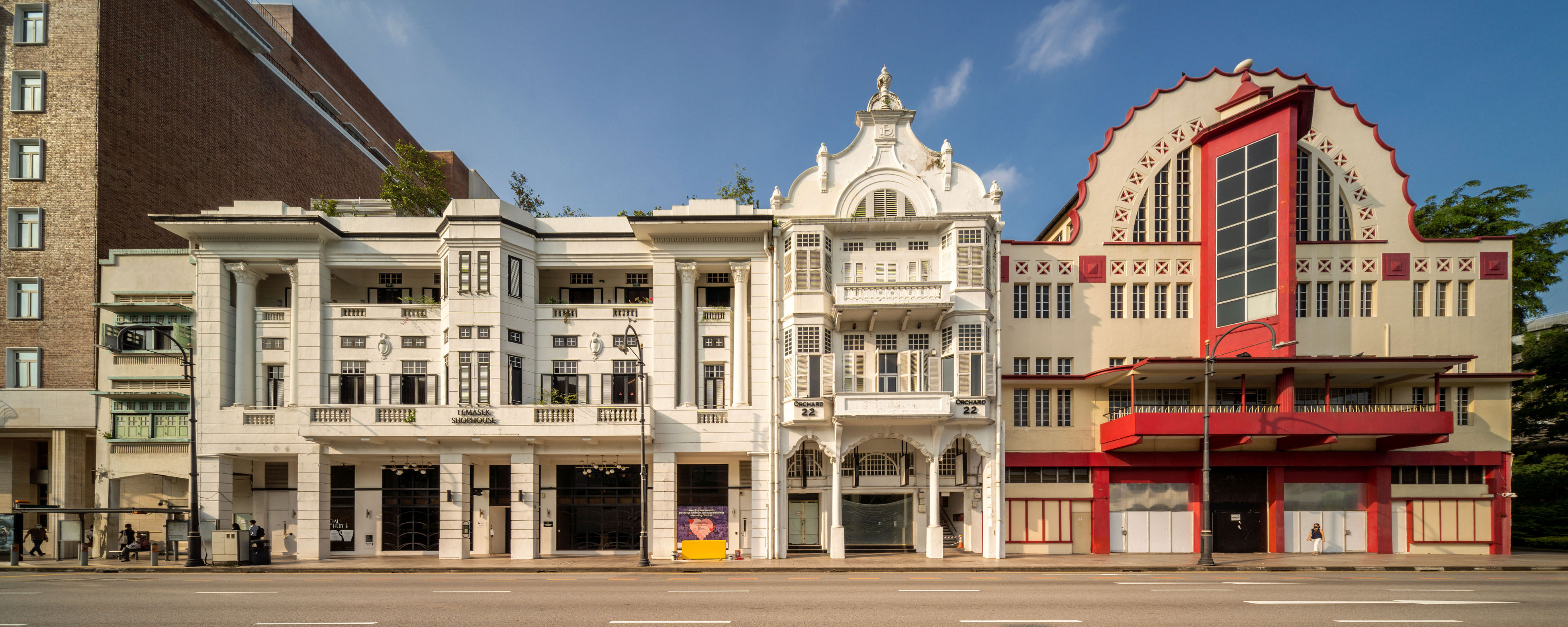
Designing for sustainability will continue to be a priority in 2024. It goes beyond the design of a building. We also have to think about a building’s day-to-day operations.
Another important trend we are following is regenerative design – which goes beyond conventional sustainability practices – that restores and enhances ecosystems using artificial intelligence (AI).
AI is a valuable part of the creative process and we need a mindset shift to dispel concerns of AI replacing designers.
Instead, designers should think of AI as ‘assisted intelligence’, as there is vast potential to harness its computational capabilities to create more innovative and captivating designs.” – Chantal Sajan
Preserving the soul of spaces

Mr Peter Tay, 52, is a President’s Design Award recipient of Designer of the Year 2014. After graduating in architecture from London’s Architectural Association in 1999, he pivoted to interior design. He manages high-end global projects with his team at Peter Tay Studio, which he founded in 2003, and is known for redesigning the homes of celebrities such as Chinese-American singer Wang Leehom and Chinese actress Zhang Ziyi.
“I’m working on several dream projects, such as the interior design for an upcoming residential development by billionaire Peter Lim in Ardmore Park.
I’m also redesigning the main lobby, two sky terraces and a rooftop communal space at South Beach Office Tower in Beach Road. The building was designed in 2016 by British architectural firm Foster + Partners.
But one project that stands out is the reimagining of the interiors of the luxe J-Sekka Suites, a hotel in Niseko in Hokkaido, Japan. Niseko is known as the St Moritz of the East for its ski slopes and powdery snow.

I was tasked with redesigning J-Sekka’s luxury residential apartment comprising studios, two-bedroom suites and two penthouses. Amenities at the apartment include a bar, a lounge, a spa, a wellness centre and restaurants.
The hotel boasts stunning views of Mount Niseko Annupuri’s snow-capped peak.
I conceptualised the interiors with local woods, such as birch and hinoki (Japanese cypress), to provide a counterpoint to the winter wonderland outside.
My approach to interior design is to find opportunities in the layout to incorporate a reflective surface, such as a ceiling mirror, or use metal or glossy veneers for a mirror-like effect.
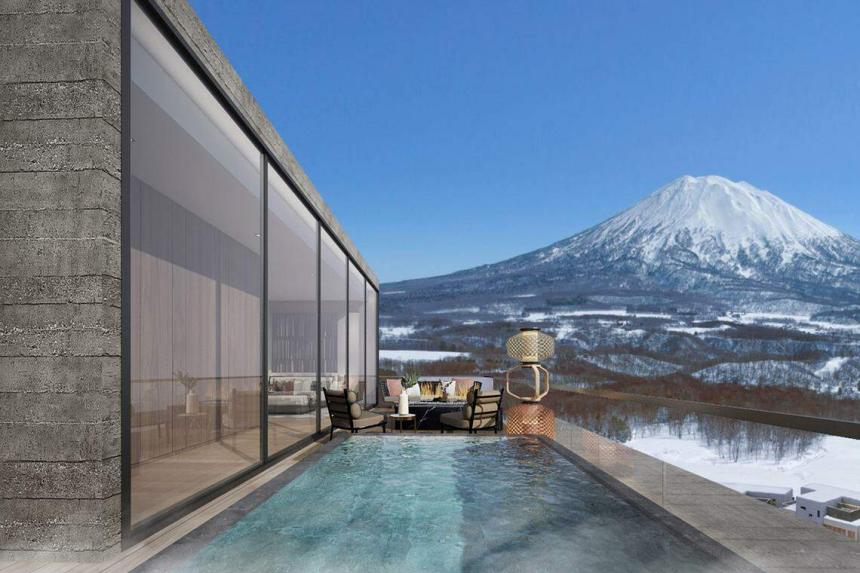
Reflections gently nudge people to slow down and contemplate. I have been designing meditative alcoves with reflective accents for almost two decades.
I am not concerned about trends, as a site tells me everything I need to know about how it should be transformed.
I look at the historic underpinnings of the place and try to unearth the unwritten ‘literature’ inherent in the site.
This is done through intensive background research about the character of the site, its owners, their aspirations and, most importantly, what the space is going to be used for.
When the provenance of a site is respected and reimagined as a modern space, it creates a legacy.
My dream projects allow me to freeze the ‘soul’ of a space as I see it, through its history, colours, furnishings and accents.” – Chantal Sajan
Sustainability meets gastronomy and culture
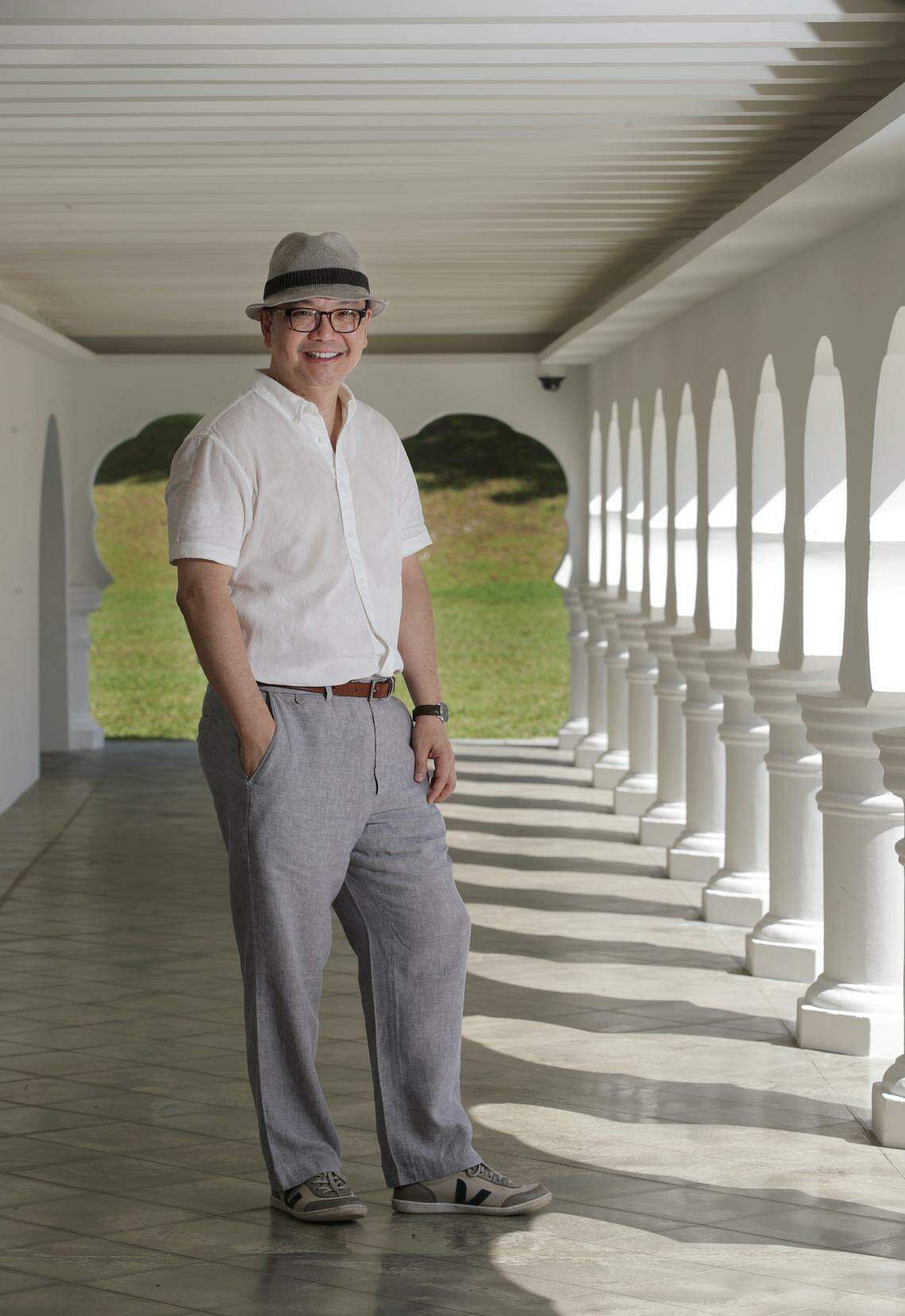
Mr Tan Kay Ngee, 67, founder of global firm Kay Ngee Tan Architects, picked up the President’s Design Award 2023 for Designer of the Year. The firms’ work on two bungalows in the Gallop Extension of the Singapore Botanic Gardens won the Singapore Institute of Architects’ Architectural Design Award 2023 for Design of the Year, as well as the Urban Redevelopment Authority Architectural Heritage Award for distinction in conservation in 2022.
“We have several irons in the fire that would fit the ‘dream project’ billing, but one that stands out in 2024 is the Tariria Culture, Art and Gastronomy Centre in Van in eastern Turkey.
It is envisioned by the Turkish government as a premier tourism destination, and its culinary academy aims to integrate local culture, history, architecture and nature. It is named after Queen Tariria of the Urartu Dynasty, who established gardens and a sprawling orchard on the project site more than 2,800 years ago.
Everything about the project evokes an ethereal charm. When my team and I visited the site years ago, there was a rare, dream-like quality about the land, perhaps from its long history.
Many parts are still untouched and just waiting to be discovered. There is also a 12th-century church on Akdamar Island in Lake Van, which has some of the region’s most beautiful architecture.
Our goal is to strike a balance between the region’s vast cultural heritage and contemporary architectural innovations.

Tariria Centre is designed using Turkish hardwoods, such as chestnut and walnut, and locally sourced volcanic stones, such as ahlat stone.
Feature glass walls, supported by a locally produced steel structure, blur the lines between the outdoors and indoors.
The hall of the lobby can seat up to 150 people for events such as conferences or seminars, and can be converted into a lounge or bistro.
There is also a multi-purpose hall that can accommodate up to 800 visitors, and a two-storey restaurant area with panoramic views of Lake Van and Mount Suphan which, at 4,000m high, is one of Turkey’s highest volcanos.
By using sustainable materials for construction and preserving the traditional values of the indigenous people, we can ensure the economic development of the communities that call Van home.” – Chantal Sajan
